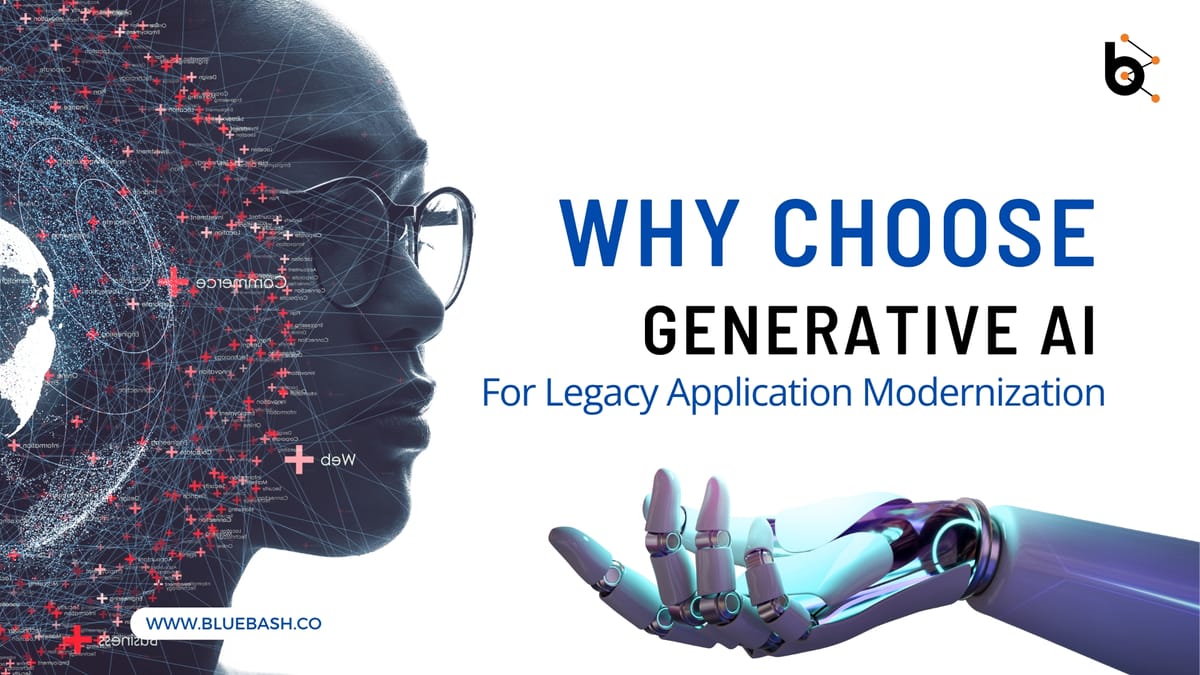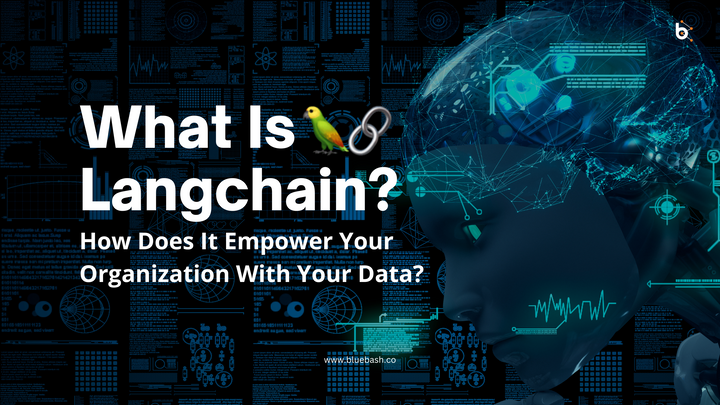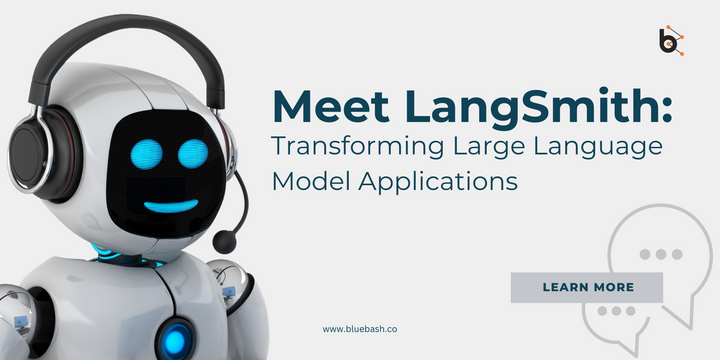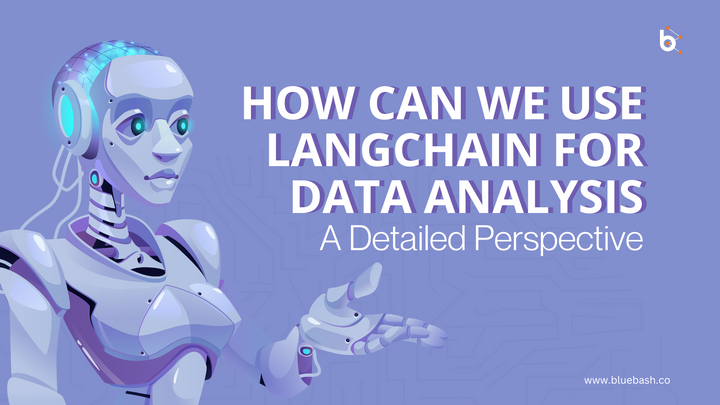Why Choose Generative AI for Legacy Application Modernization?

Application Modernization is crucial for keeping your business applications functional and efficient. However, evolving trends bring challenges such as rising costs and execution complexities. In this blog post, we explore the role of Generative AI in Legacy Application Modernization for 2024. We'll also analyze how this technology will revolutionize AI-driven Modernization.
Understanding Generative AI
Generative AI refers to a type of AI that creates new content and ideas, such as conversations, stories, images, videos, and music. It uses machine learning algorithms to analyze existing data and generate new outputs. Unlike traditional AI, which mimics human intelligence in tasks like image recognition and Natural Language Processing (NLP), Generative AI operates autonomously, working without predefined patterns and rules.
Generative AI for Application Modernization is autonomous, collecting vast datasets from various sources, identifying relationships and patterns, and creating new data almost identical to the original. It has applications in multiple domains, including image synthesis, NLP, and application development.
Traditional AI vs. Generative AI
Traditional AI, or Narrow AI, excels at specific tasks within a defined set of rules. It learns from data and makes decisions based on that data but doesn't create anything new. In contrast, Generative AI advances artificial intelligence by creating new rules and algorithms. It generates original and creative content, including text, images, music, and complex coding, making it a significant choice for Legacy System Upgrade and Application Transformation.
The Advantages of Generative AI at Every Stage of the App
The application modernization process involves a series of structured stages, each with specific deliverables and milestones aimed at successfully migrating and modernizing legacy applications. Here's how Generative AI in Software Development benefits each phase:
Discovery
Generative AI Solutions reduce the need for extensive involvement from subject matter experts. They excel in code analysis, extracting insights from outdated documents, and correlating domain or functional capabilities to code and data. This leads to effective decomposition exercises, event-storming, and domain-driven design. By providing visibility into legacy applications and dependencies, Machine Learning (ML) mitigates risks and enhances the efficiency of the discovery and design phase.
Planning
AI-powered innovation generates roadmaps that consider an application's domain area maps, complexity factors, and dependency patterns. This enables continuous realignment through Program Increments (PIs) and addresses the challenge of balancing parallel efforts versus sequential dependencies. Planning becomes more informed and flexible when generative AI development is used to correlate application portfolio information with dependencies that are found.
Build and Test
In the build phase, Generative AI Solutions go beyond code generation to produce related artifacts such as security design points, pipeline code/configurations, and Infrastructure as Code (IAC) based on swaggers or legacy code insights. They orchestrate these outputs using predefined application reference architectures. Additionally, in testing, AI-powered innovation helps create the right set of test codes, test cases, and test data.
Deploy
Generative AI in Software Development simplifies critical "last mile" activities during deployment. By examining Infrastructure-as-Code, application logs, and design points, it speeds up security validation. Release procedures are streamlined by the capacity to produce configuration and change management inputs. By drawing insights from release notes, Machine Learning (ML) enhances the efficiency of security review and approval processes.

Overcoming Common Legacy System Challenges with Generative AI Solutions
Typical challenges include:
Absence of Annotations: Legacy code becomes a jumbled mess in the absence of obvious structure and annotations. Understanding relationships between code sections is time-consuming, hindering even basic tasks.
Unhandled Errors: Legacy code often lacks proper exception handling, causing errors to cascade like dominoes and leading to unpredictable crashes.
Code Duplication: In legacy systems, data access code is scattered throughout the codebase. A single piece of data modification necessitates checking multiple places, which increases the chance of errors and wastes time.
Lack of API: Legacy systems often lack proper data organization, with data scattered across databases and unclear relationships. They lack well-defined APIs for system communication, resulting in irrelevant data retrieval.
Solutions to These Challenges
1. Leveraging Generative AI Development for Annotations: Our technique guides our Generative AI models, trained on vast datasets, to analyze legacy code. These models provide suggestions and point out areas that need work.
2. Implementing AI-Powered Error Handling: By using AI-Powered Innovation, we can enhance exception handling in legacy code, preventing errors from cascading and reducing the likelihood of unpredictable crashes.
3. Reducing Code Duplication with Machine Learning: Machine Learning (ML) algorithms help identify and consolidate scattered data access code, stream stream modifications, and minimize the risk of errors.
4. Establishing APIs with Generative AI Solutions:
Generative AI Solutions can design well-defined APIs, ensuring proper data organization and efficient communication between systems. This procedure is enhanced by the LangChain framework, which saves a great deal of time and effort by converting outdated Java controllers into organized Spring Boot REST controllers.
By leveraging AI-powered innovation of and Machine Learning (ML), we can tackle the complexities of Legacy System Upgrades and Application Transformation. This approach not only modernizes your legacy applications but also ensures they are robust, efficient, and aligned with current technological standards.
Conclusion:
The field of application modernization is being completely transformed by generative AI. Beyond basic automation, it allows power to develop solutions that improve user experiences, expedite procedures, and business expansion. By leveraging Generative AI Consulting for App Modernization, organizations can breathe new life into their legacy systems, making them more agile, scalable, and efficient.
This transformative technology reduces the time and cost associated with application modernization and empowers businesses to stay competitive in a rapidly evolving digital world. As we continue to explore the potential of Generative AI, its integration into modernization strategies will become essential.
Faqs-
What is the primary goal of Generative AI for App Modernization?
The main goal of Generative AI for App Modernization is to generate new, original content or data that mirrors existing data, which can be utilized for various relevant purposes. This includes creating text, images, music, and more.
How can businesses future-proof their use of generative AI in application modernization?
Businesses can future-proof their use of generative AI in app modernization by investing in ongoing talent development, staying updated with the latest AI technologies, and fostering a culture of innovation. Additionally, maintaining flexibility in adoption strategies ensures a resilient and future-ready approach.
Are there specific architectural considerations for implementing generative AI in application modernization?
Yes, there are several architectural factors to consider when implementing generative AI in app modernization. It is crucial to choose a scalable and robust infrastructure to handle the computational demands of generative AI algorithms. Adopting a modular and flexible architecture allows for easier updates and adaptations as the AI model evolves.
What precautions are needed when adopting Generative AI for App Modernization?
When adopting Generative AI for application modernization, several security measures should be considered:
- Ensure data privacy and compliance
- Conduct risk assessments
- Implement strong authentication and authorization
- Regularly update and patch AI frameworks
- Monitor and audit AI models for vulnerabilities
- Train staff on security best practices



